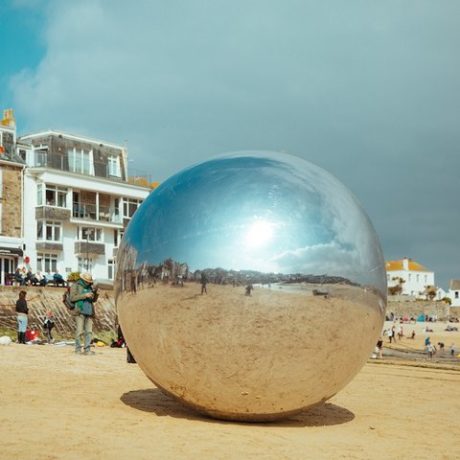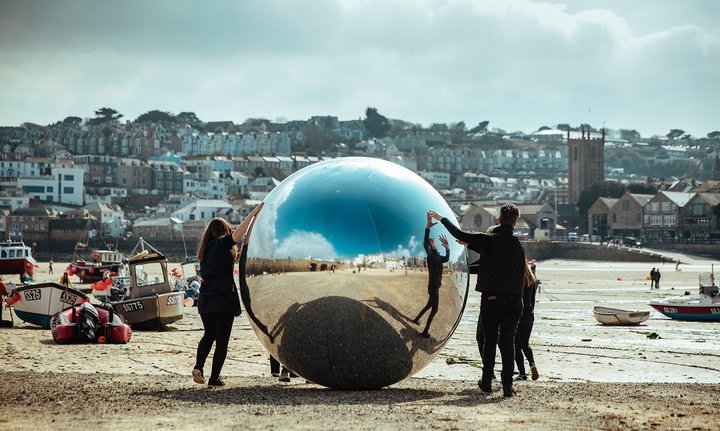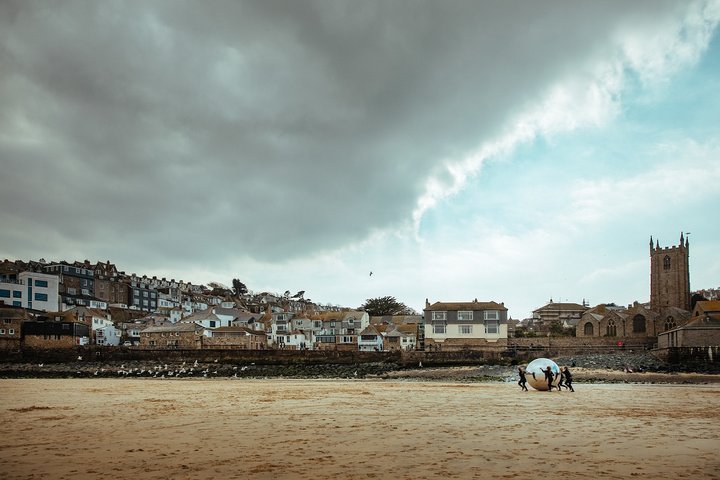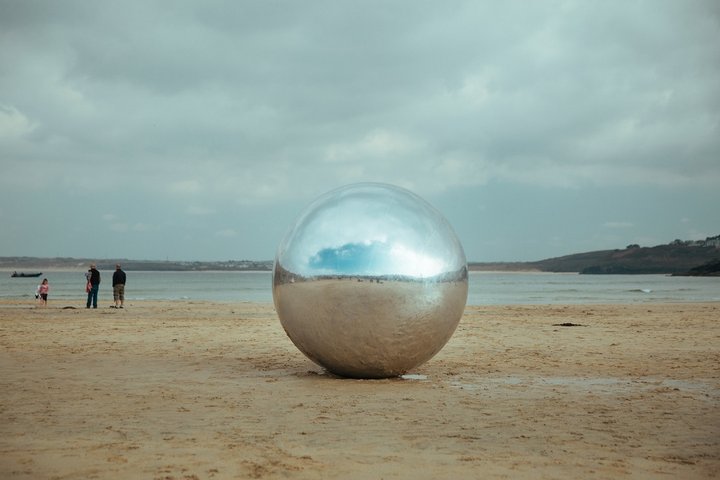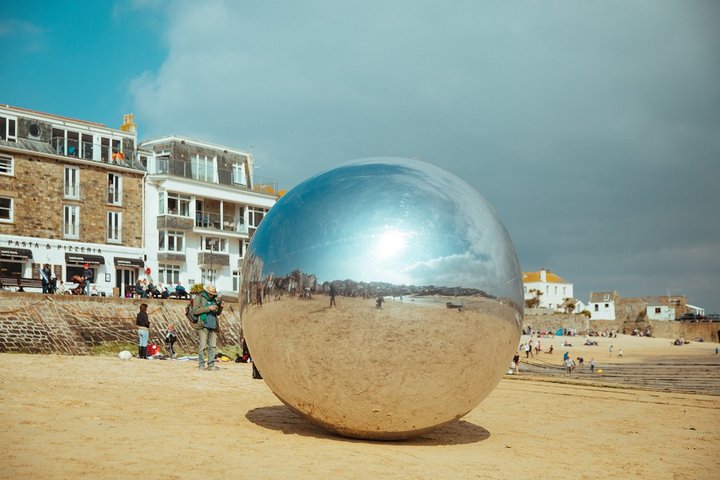
How do you interpret a city or space through the use of sound? It’s a question that Dutch artist Allard van Hoornhas committed himself to throughout his practice, taking inspiration from Australian Aboriginal songlines, and finding numerous imaginative ways to invite communities to map their area of habitation through sound: one example, which is currently rolling around Tate St Ives, involves members of the community pushing a huge silver ball around Tate’s vicinity, with Van Hoorn recording sounds that will be interpreted to a live performance when the ball finds its way to Tate itself.
Can you explain the inspiration you’ve had from the Australian Aboriginals, how their songlines work, and why you decided to use this as a basis to explore and tell stories about cities and urban landscapes?
After reading the book Songlines by Bruce Chatwin, I got on a plane to Australia to learn more about the interesting way that the Australian Aboriginals relate to their environment, the landscape and public space. By singing the shape of the land in language and tonal structure, they map, spiritually embody (the songs tell the story of the creation) and maintain balance in the land that they take care of. This is a support system for living respectfully and sustainably in harmony with animals and land in a very sparse environment. For me it was an inspiration to think about how we can intensify our relationship with our cities and public spaces. By not just living and working in, but also listening to our daily surroundings we can start to rethink our relationship with the public spaces that we collectively own and use.
How easy is it to capture the spirit of a city through an audio performance?
The public spaces I work in and the architecture I work with are described through choreographies or scripts that sonify these places. These recorded responses of the urban landscape are reflections of the dynamics of these places: histories, the present, possible futures, social and political observations. I work with local communities to arrive at ways to investigate a place through sound. It pans out differently every single time. The process is not predictable at all. And the projects keep developing until the very moment of presentation.
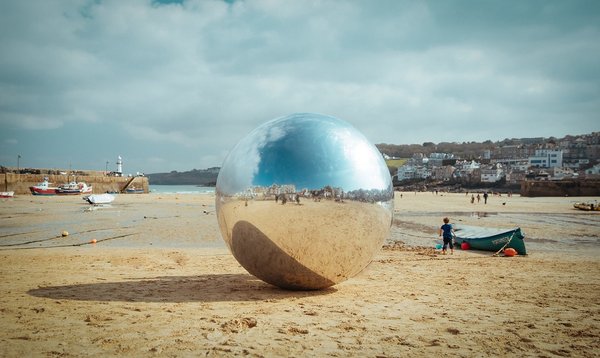
Do you think that audio is an important way of getting to know places and people and things? Does the art community or the world in general place too much importance on gaining familiarity through the visual and how things look?
We rely on visual information to get around, and sound is not usually designed to help us decode public space, even though audio-perception exists in 360-degrees. So when public spaces and architecture are translated into sound as an exercise to relate differently, we are untrained in decoding it, which could help us to have fresh perspectives on how we relate to our environment. These Urban Songlines also are ways to think about how we are part of spaces and what we can do with them; which role we can play in them.
What can we expect to see at your St Ives exhibition and what do you want visitors to be taking away from it?
In St Ives I have taken inspiration from the silver ball, no larger than a tennis ball, that is hurled onto a crowd of excited children by the mayor every Feast Day in February, who receives it back at the strike of noon and rewards a symbolic coin to the one who brings it in. My work has been created at a super-sized 2.12 meters tall, and we are starting with this inflatable silver sphere in Penbeagle Estate in the Community Orchard and Skatepark. Many communities will roll this ball through the landscape, from bards to rugby players, the Royal National Lifeboat Institution, Salvation Army, the Charter, Scouts, fishermen; all communities who responded through open calls participate, see themselves together, reflected in the landscape of their town, play games and describe St Ives by rolling Silver Ball through its streets, the harbour, over the fields and finally into the Loggia of the Tate. When we arrive at the museum I will make live music from the sounds I recorded of the ball describing the town. This sound-piece will be semi-permanently installed in the Loggia for all to listen to St Ives as a piece of music created by all communities that form it. All videos of the Urban Songlines of 2009–2019 will also be on view in Gallery 10 of the Museum until 1 September. This is the second yearly iteration of Tate St Ives’s Public Art Commission that aims at strengthening community bonds.
Do you have a favourite work from your Songlines series and does this correspond to your favourite city that you visited as part of this project?
All Urban Songlines help me learn about local communities, histories, cultural and political perspectives. I’m always looking forward to the next project in the series. In September I’ll be installing Diamond Dust under the Diamond Vaults of the Architecture Museum in Oslo, a former bank. More on that soon.
In Focus: Allard van Hoorn: Urban Songlines
Until 1 September with a performance on 22 June at Tate St Ives
VISIT WEBSITE